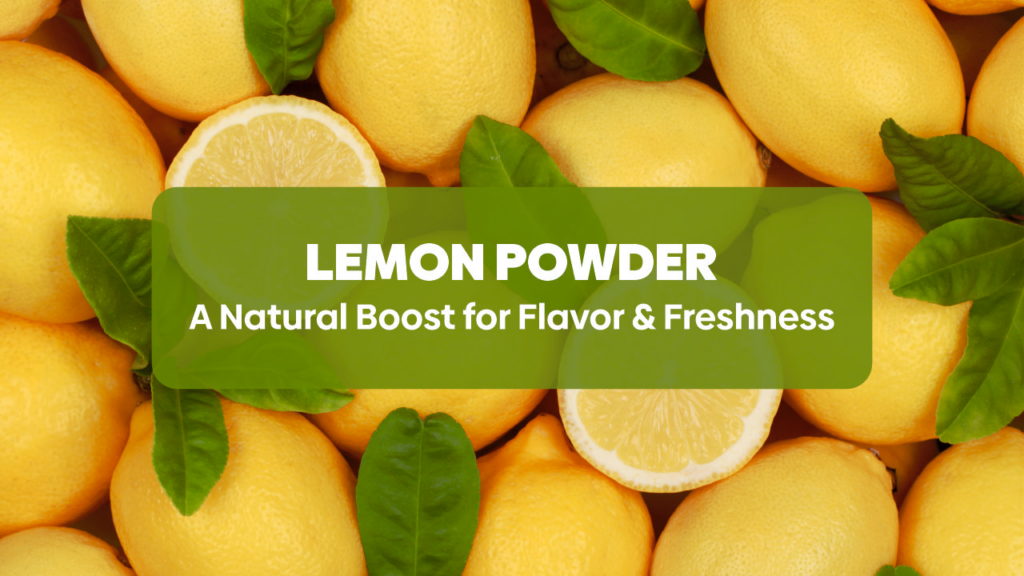Baking with Nature: Natural Colors for Vibrant Cakes
Clean-label and natural products are changing the baking game. A quick shift towards healthier alternatives with natural ingredients can improve the quality of the product without compromising on cost. Natural food colour manufacturers are driving transformation with this shift in interest. Another strategic tactic that can be adopted by bakeries, confectionery producers and food service providers would be choosing natural colours over synthetic ones to create better quality products and to appease health-conscious and environmentally conscious consumers.
In this blog, we’ll explore four key natural colourants: Gardenia blue, anthocyanin, beta carotene, and chlorophyll, and how they are shaping the B2B baking landscape.
Understanding Natural Colors in Baking
Natural colors from fruits, vegetables, and other natural sources, such as those below, deliver bright, lively hues to baked goods. These colors meet the growing demand for naturally sourced and minimally processed ingredients while giving baking businesses a advantage in competitive markets.
These pigments interact with temperature changes when baking to form precise shades that enhance the product’s visual appeal. For example, beta carotene gives a warm yellow colour, which might be perfect for carrot cakes and autumn bakes, or chlorophyll, a fresh green that looks great on pistachio-inspired cupcakes or those with a nature theme.
Beyond aesthetics, natural colors add value as a response to consumer demand for healthier and more sustainable options. They also place businesses in an innovative light that reflects current trends.
Natural Colors in the Bakery Sector
Gardenia Blue
This vibrant blue colour is extracted from the Gardenia fruit and brings stunning visual appeal to celebratory cakes, novelty cupcakes, fondants and sprinkles. Perfect for festive events or themed products, Gardenia Blue keeps baked goods in the spotlight and catches the attention of the customer’s eye, particularly in markets where they target events and specialty products.
Anthocyanin
Extracted from fruit extracts like blueberries and blackberries, anthocyanin offers the richest shades of purple and blue, perfect for seasonal bakes or berry-flavoured bakes. Very ideal for Valentine’s Day cupcakes, Christmas rum cakes, or even royal-inspired designs. Beyond aesthetics, antioxidants associated with anthocyanin make it a good popular choice for health-conscious consumers.
Beta Carotene
Beta carotene imparts a warm, rich yellow colour, especially good for carrot cakes, sweet treats around autumn, and lemon teacake. The nutritional value along with good performance in baking mixes, frostings, and creams make it an excellent choice for as well as gourmet baked goods.
Chlorophyll
Chlorophyll is the natural pigment that contributes a fresh and bright green hue to baked goods. It’s perfect for nature-inspired desserts such as pistachio cake, mint-flavoured cupcakes, or citrus-accented frosting. Chlorophyll is ideal for niche markets, as it stands well alone or with new innovative flavour profiles that could result in unique offerings.
Benefits for Businesses Having Natural Colors
Responding to Consumer Demands
Natural colors fit perfectly with consumer demand for natural ingredients, catering to health-conscious consumers.
Product Differentiation
Bright and natural shades lend more value to baked goods, as those brightened in that way are considered better, therefore commanding a price in the premium and speciality sectors.
Regulatory Compliance
Natural colours are often easier to comply with international regulatory standards than synthetic dyes, creating a smoother go-through for international trade.
Brand Identity Enhancement
The inclusion of natural ingredients reinforces a brand commitment to sustainability and wellness, a value appreciated globally.
Conclusion
Natural colours have transformed from a fad in the B2B bakery sector to an absolute requirement for a B2B player as market dynamics keep shifting. Gardenia blue for premium celebration cakes, beta carotene for health-conscious appeal in teacakes, or the fresh vibrancy of chlorophyll for unique creations – natural colours give baked goods that much more quality and desirability. In search of a reliable partner for natural colour solutions? Vinayak Ingredients provides a wide range of superior, plant-based colorants specifically designed for use in the bakery industry.



















